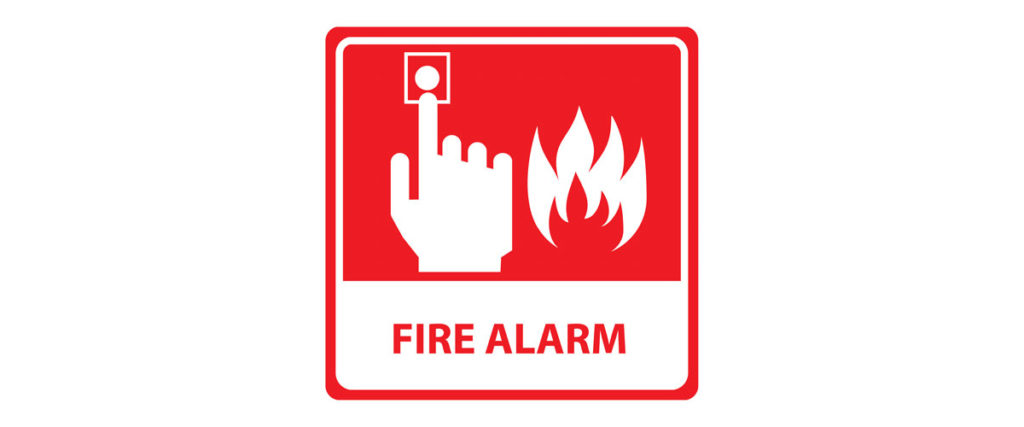Fire alarm systems are everywhere. (And they should be!) Probably you have seen smoke detectors and manual call points at shopping malls, hospitals, schools, universities, even at your home. Have you ever wonder how fire alarm systems work? If yes, keep on reading.
HOW FIRE ALARM SYSTEMS WORK?

There are three types of devices in fire alarm systems: fire alarm panel, input and ouput devices. Fire alarm panel is the brain of fire alarm systems. Basically, it receives data from input devices, evaluates those data and then triggers output devices. The operations of fire alarm panel are programmed in terms of fire scenarios. Fire scenarios should be determined by experts according to properties of the building.
Input devices can be triggered automatically or manually depending on their working mechanism. Some of the fundamental fire alarm input devices are detectors, manual call points and input modules. Detectors have many types depending on which fire indication they detect and their detection principles. Some of the most common detectors are: smoke detectors, heat detectors, flame detectors etc.
Another input device is manual call point. This device is very important because it enables people to trigger the fire alarm sytem in case of fire. But people must avoid misusage of manual call points. Otherwise, there will be false alarms in the fire alarm system.

Last but not the least, input module is one of the input devices of a fire alarm system. Input modules are used for integration of fire alarm systems and other electrical or mechanical systems in the building. For example flow switches of sprinkler systems or eathquake sensors can be monitored by input modules. If the system that is monitored activates, input module informs the fire alarm panel about the incident. This incident does not have to be only fire. It can be earthquake, gas leakage or other emergencies.
Once input devices are triggered, they send signals to fire alarm panel that there is an emergency. Then fire alarm panel triggers the output devices after some evaluations. Most common output devices are sounders, beacons and output modules.
Sounders and beacons warn people that there is a fire incident audially and visually. Therefore people can evacuate the building. These devices save lives in case of emergency.
Output module is another fundamental output device in fire alarm systems. They are used for integration of fire alarm systems and other electrical or mechanical systems in the building. Output modules control other systems in case of fire so that fire scenarios can be implemented. For example, elevators can be directed to ground floor or exhaust fans can be triggered.
As a result, the main components of a fire alarm system are fire alarm panels, input and output devices. These devices work as a team. The data coming from input devices is evaluated by fire alarm panel. Then fire alarm panel triggers output devices in terms of fire scenarios. Also it is very important that fire alarm system is designed according to competent standards like EN 54 or NFPA. Additionally, system devices should be approved by notfied bodies according to laws and regulations of the country in which they are used.
For more info about fire alarm systems:
